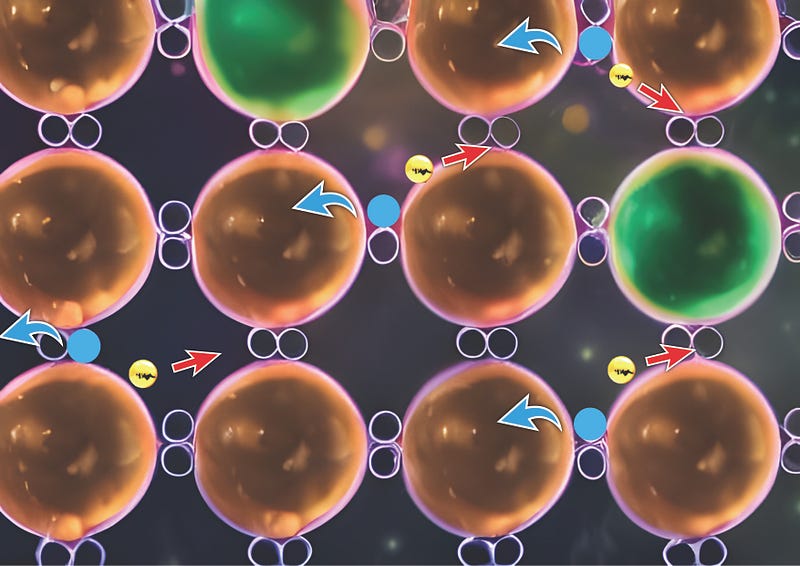Understanding Quasiparticles: The Paradox of Absence and Behavior
Written on
Chapter 1: The Enigma of Quasiparticles
The concept of quasiparticles is truly captivating, even if it defies our intuitive understanding. Nonetheless, this phenomenon is real and fundamental to the technology that enables you to read this text on your device right now.
What Are Quasiparticles?
Within your smartphone or computer, electrons continuously traverse diodes and transistors, facilitating their operation. While these electrons move from one atom to another, a broader perspective reveals not only a flow of negatively charged particles but also an opposing flow of positive charges.
This second stream of positive charges mainly arises from vacant positions left by electrons in the Valence Shells of atoms. As an electron hops from one silicon atom to another, it creates a void—an effectively positive "hole"—in the silicon atom it departs from.
These positively charged "holes" represent a form of quasiparticle, the central subject of this discussion. Although they are not tangible particles, they lead to observable phenomena with significant practical applications.

The Electron Hole Explained
One type of quasiparticle is known as an "Electron Hole." This entity possesses an effective positive charge (the residual positive charge from protons in the nucleus) and, under certain conditions, may exhibit an effective positive mass.
In essence, we can treat and model it as if it were a genuine particle. But what role does it play? It enables diodes to operate as valves for electricity through p-n junctions. These junctions, along with quasiparticles, are integral to technologies like solar cells and transistors, forming the backbone of our modern world.
Not bad for something that is, on the surface, merely a “hole” in an electric field, right?
Phonons and Their Role
Another significant quasiparticle is the phonon, which represents an excited state in the quantization of vibration modes within elastic structures. In simpler terms, phonons are the quantum units of sound and heat, akin to how photons represent the quantum of light.
Phonons have a remarkable effect on superconductivity. When iron atoms are cooled to nearly absolute zero, the phonons generated by electron movement effectively bind pairs of electrons, leading to superconductivity.
In this scenario, similar to how photons act as messenger particles for electromagnetic forces, phonons (along with the Cooper Pairs they form) serve as messenger particles for an emergent quasiforce mediated by quasiparticles. The properties of quasiparticles often resemble those of force-carrier particles, including quantized energy levels that are multiples of Planck's constant and a bosonic nature that allows them to occupy the same space simultaneously.
Interestingly, quasiparticles can combine to form larger and more complex entities, similar to how quarks and electrons come together to create atoms. For instance, Rotons consist of Cooper Pairs, which are themselves composed of Phonons.
It’s important to note that many quasiparticles exist beyond those mentioned here, including Magnons, Polarons, and Excitons—an entire ocean of them!
Postscript: The Nature of Existence
A notable aspect of quasiparticles is their reliance on a medium filled with regular particles for their existence; otherwise, they cannot manifest. Unlike conventional particles, quasiparticles cannot exist in isolation. However, their applications and the real-world effects they produce are both significant and intriguing.
If you found this content engaging, consider supporting us by joining Medium through our referral link. Your support helps us continue sharing valuable insights!
Read the works of Keg Umian and countless other writers on Medium. Your membership directly benefits Keg and the community.
Citations
- Solid State Physics: Neil W. Ashcroft: Free Download, Borrow, and Streaming: Internet Archive
- Ultracold Atoms Permit Direct Observation of Quasiparticle Dynamics - Physics World
- Superconductivity: An Exciting Quantum Phenomenon in Condensed Matter Physics